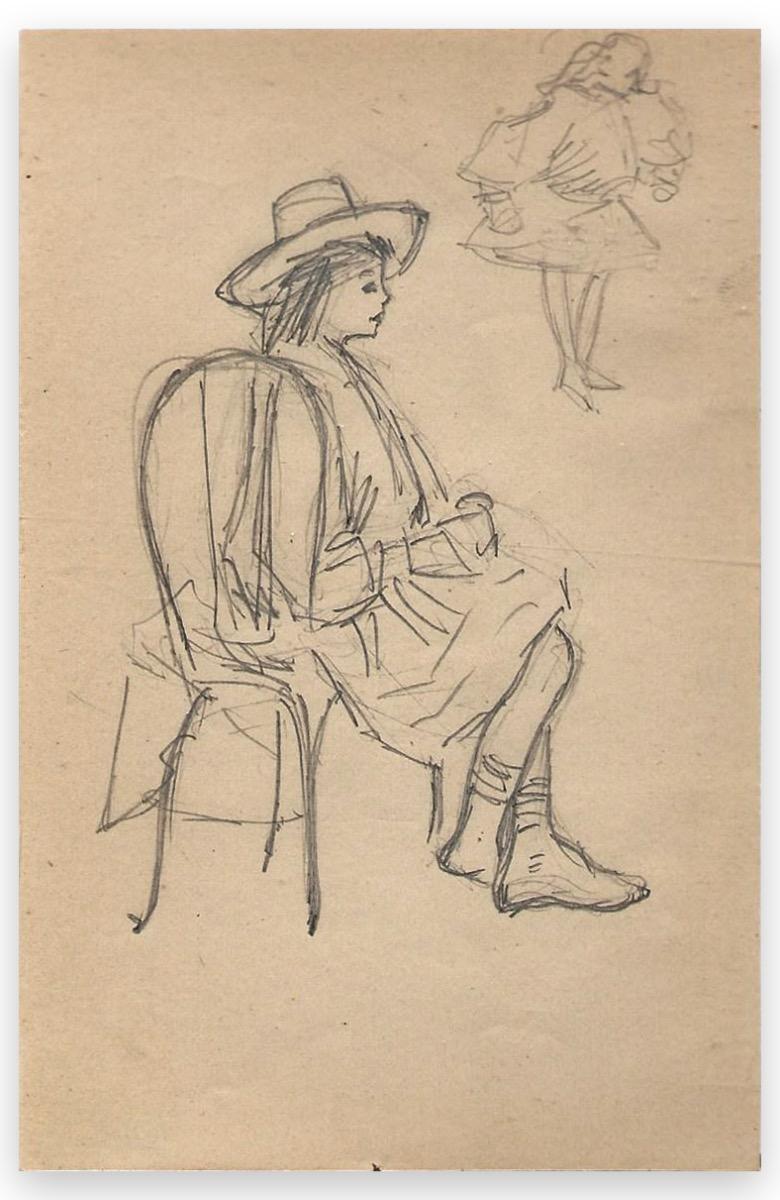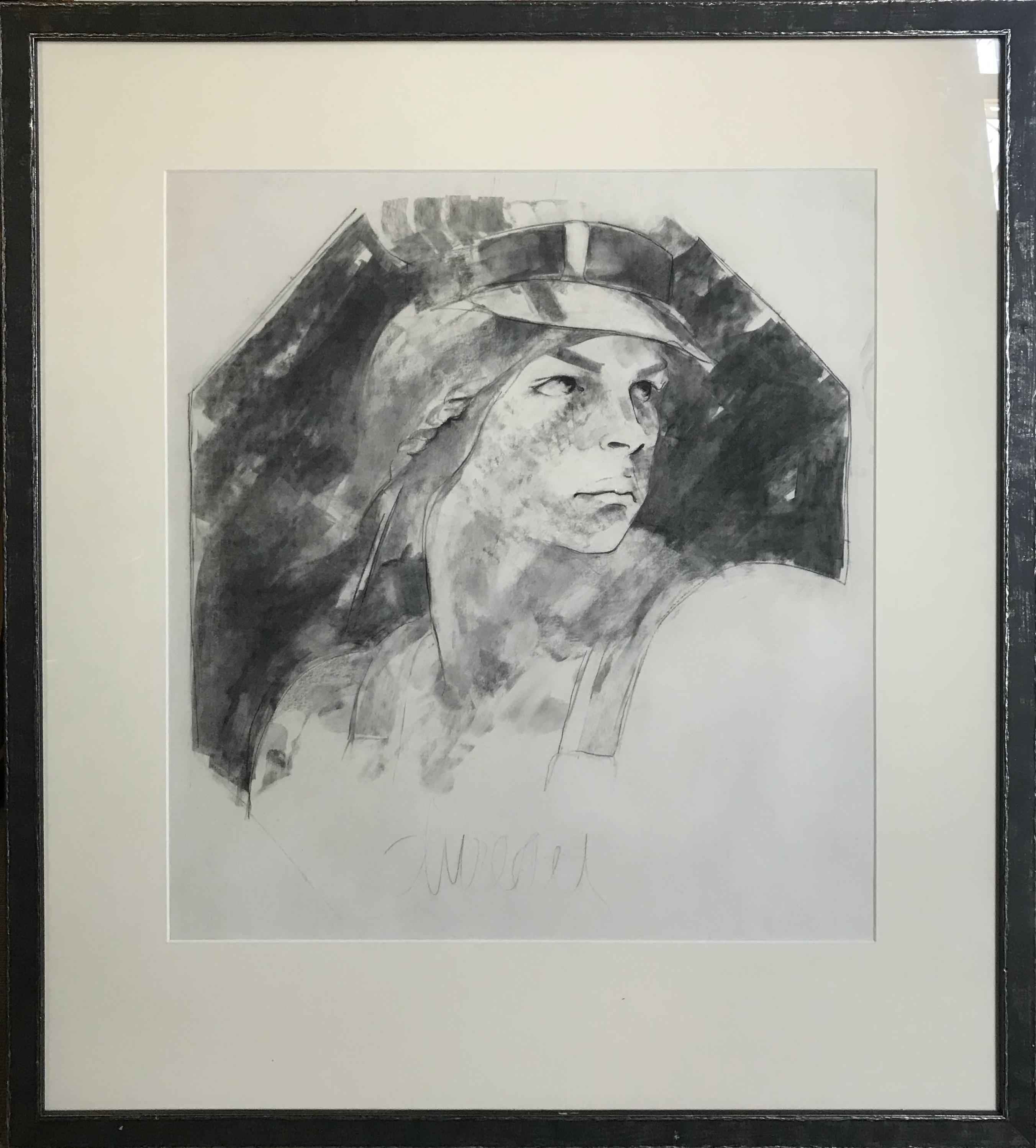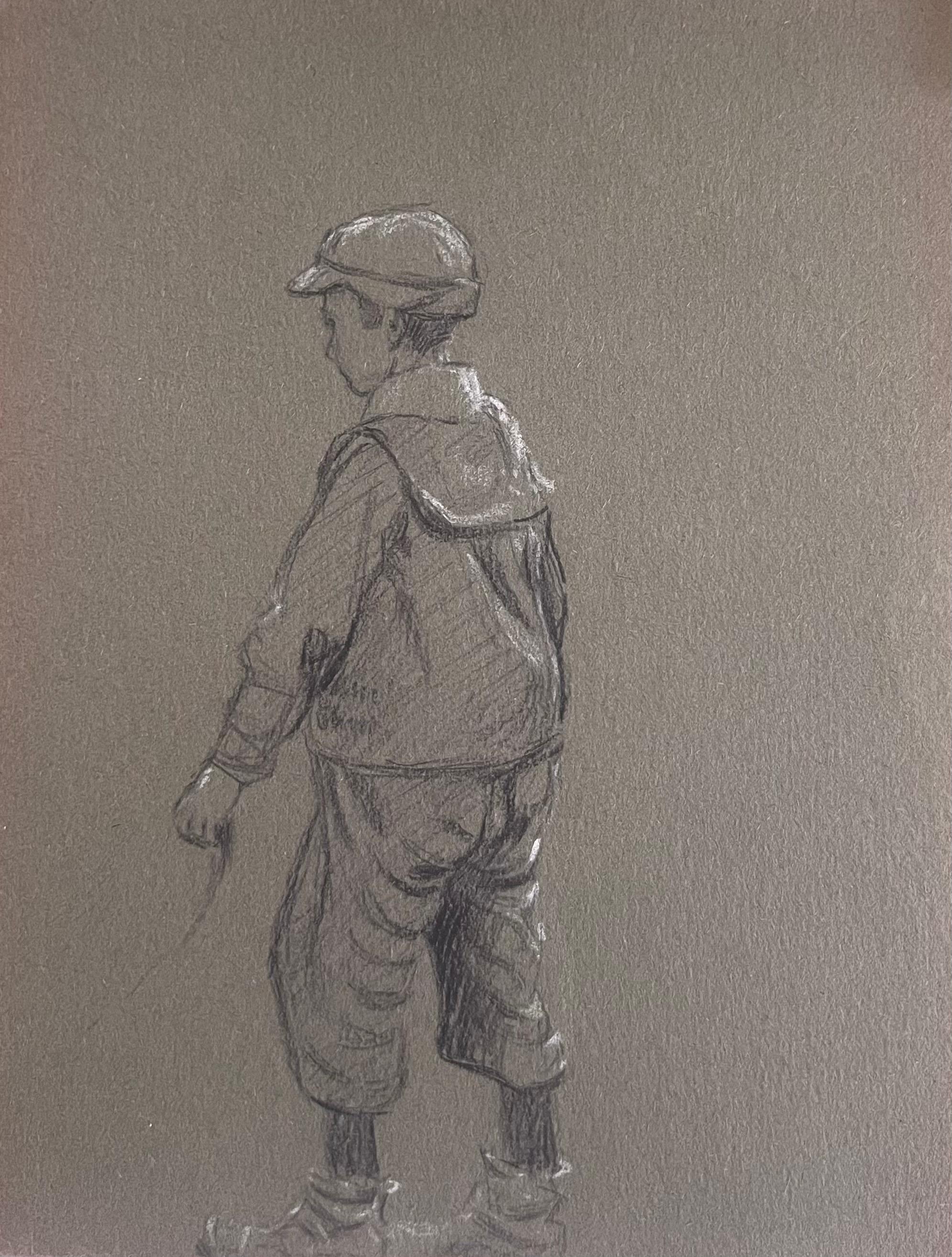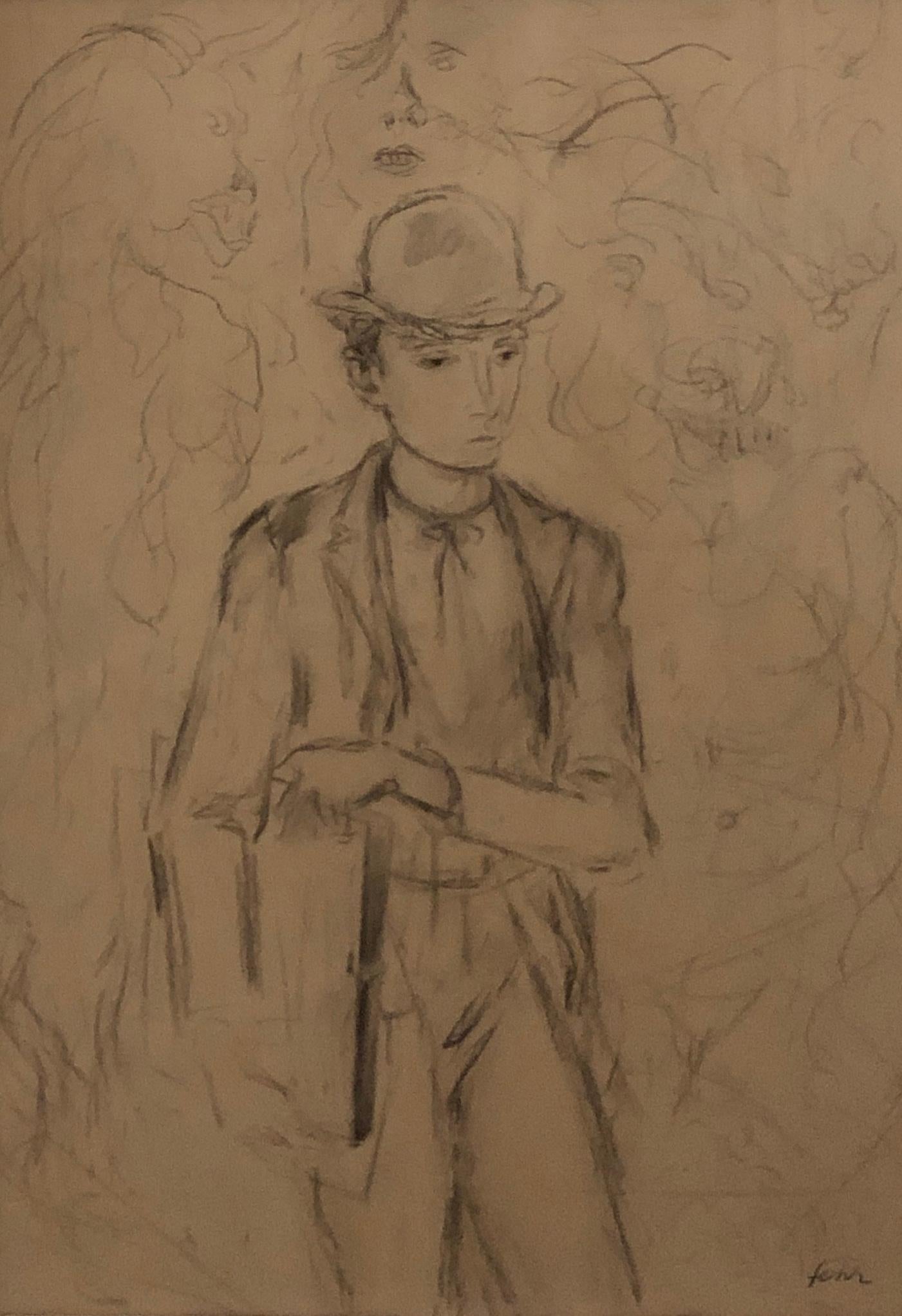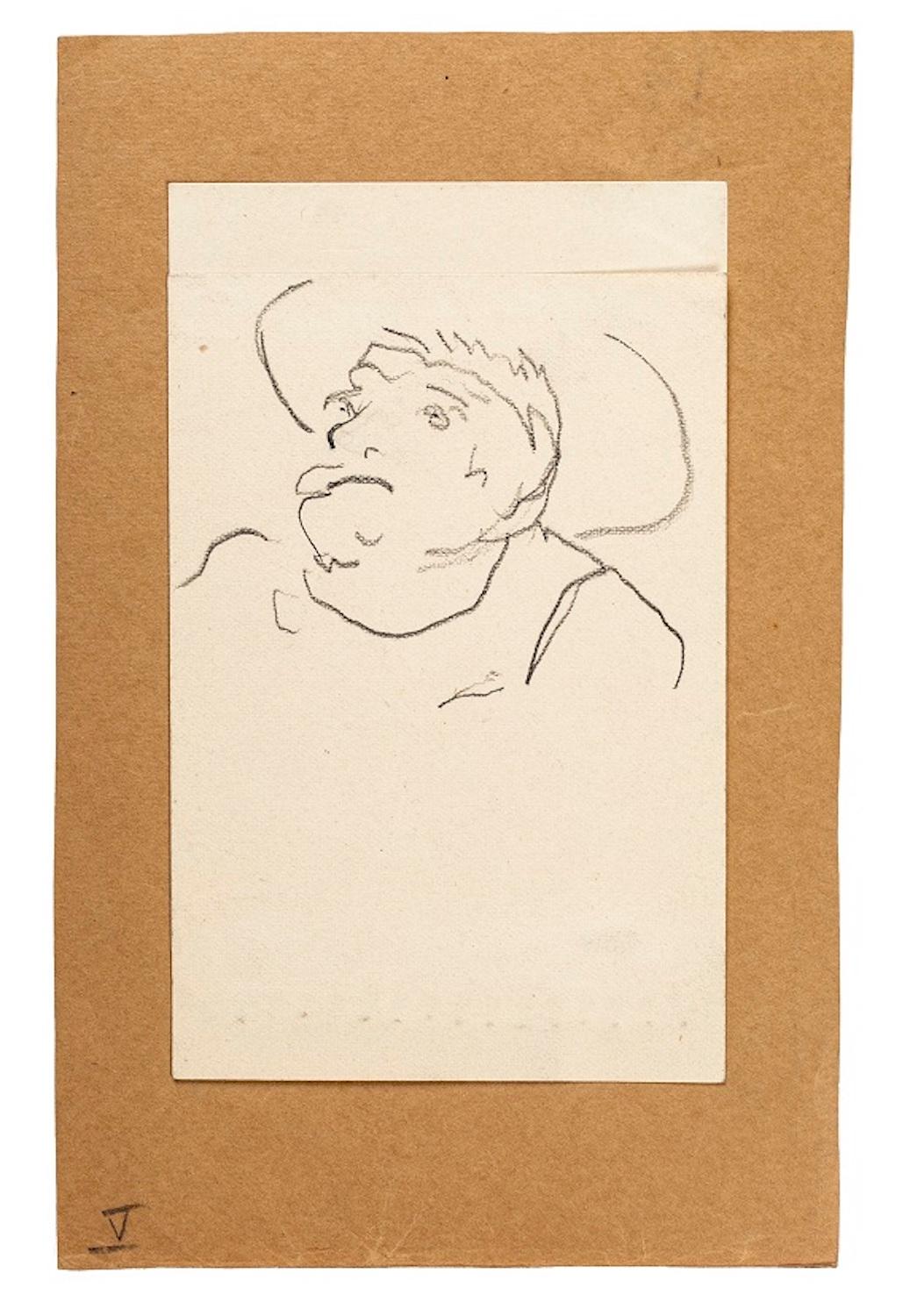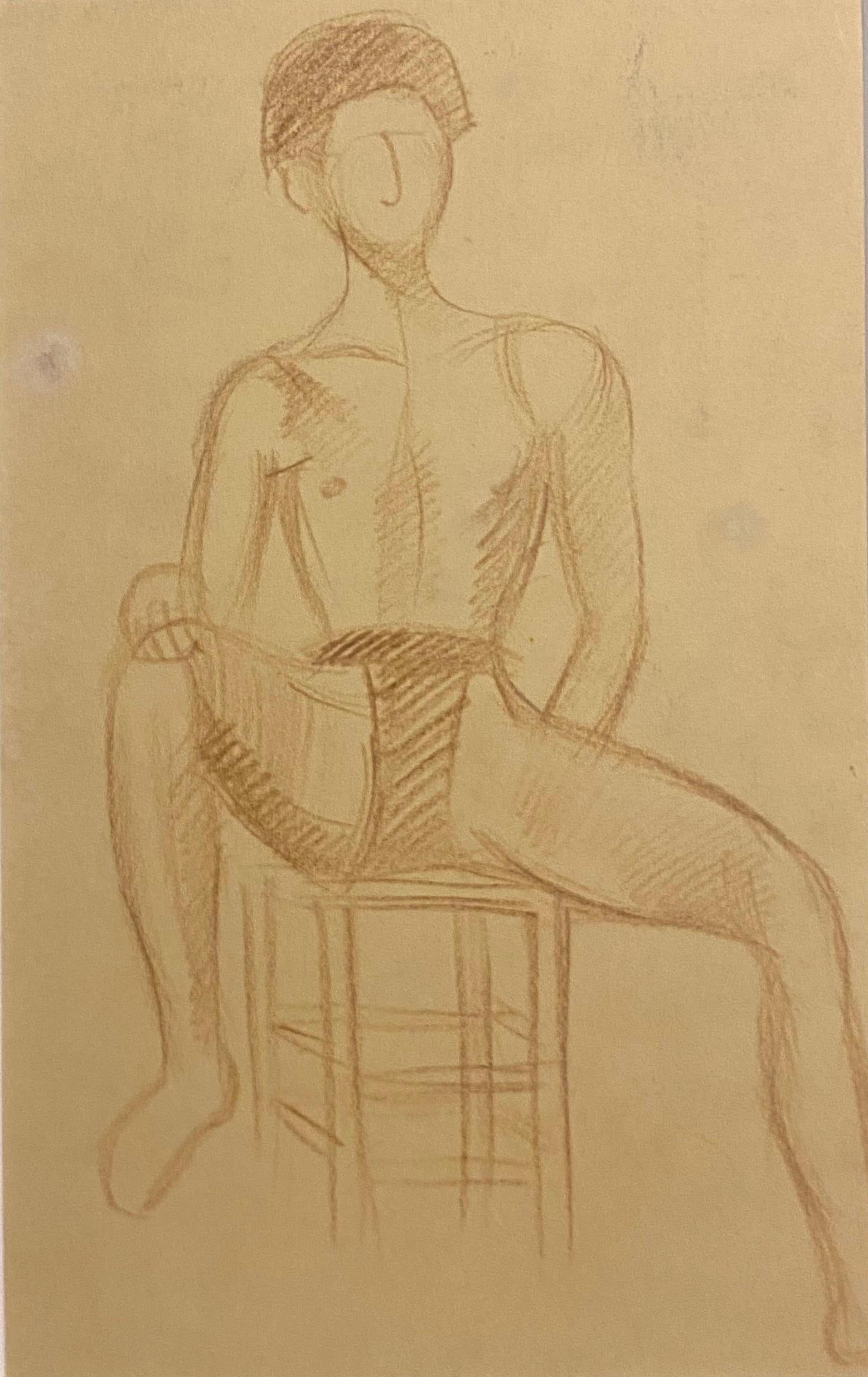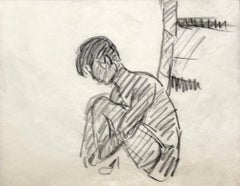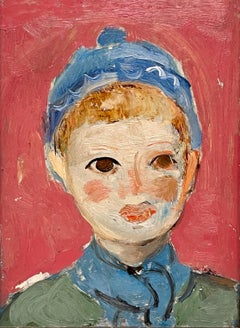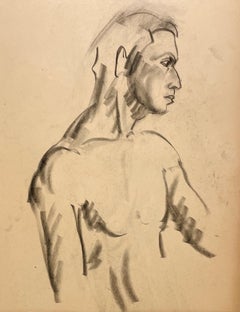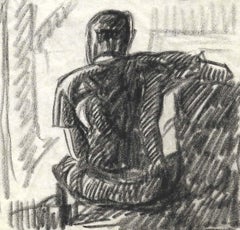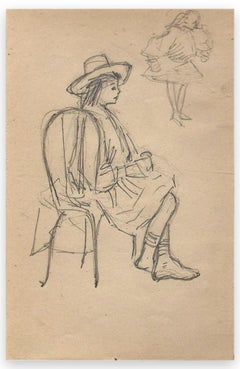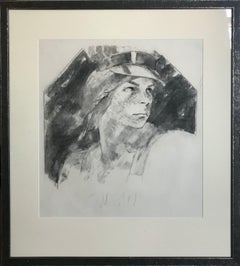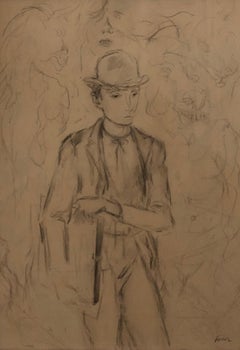Items Similar to A Delightful 1930s Portrait Sketch of a Young Boy in a Baseball Cap
Want more images or videos?
Request additional images or videos from the seller
1 of 9
Harold HaydonA Delightful 1930s Portrait Sketch of a Young Boy in a Baseball CapCirca 1930s
Circa 1930s
$85
£63.94
€73.70
CA$119.73
A$131.37
CHF 68.76
MX$1,616.77
NOK 866.21
SEK 811.34
DKK 550.30
About the Item
A Delightful, 1930s Portrait Sketch of a Young Boy in a Baseball Cap by Noted Chicago Modern Artist, Harold Haydon (Am. 1909-1994). Full of Character! A charming little gem of a portrait study. Charcoal on heavy sepia toned paper. Artwork size: 4 x 4 1/4 inches, unframed, mounted / floated to archival mat board measuring 8 1/4 x 8 3/4 inches (ready to frame). Estate stamped on reverse; Provenance: Estate of the artist.
Harold Emerson Haydon was born in 1909 in Fort William, Ontario, Canada. He moved to America, settling in Chicago with his family in 1917 and became a naturalized U.S. citizen in 1941. Haydon attended the University of Chicago Lab School and the University of Chicago, where he earned a Bachelor’s Degree and Master’s Degree in Philosophy. He also studied at the Art Institute of Chicago in the early 1930s. Haydon became a Professor of Art at the University of Chicago from 1944-1975 and later taught as an instructor at the School of the Art Institute of Chicago from 1975-1981. From 1975-1982, Haydon also taught as an Adjunct Professor of Fine Arts at Indiana University. He is recognized for his vibrant, painterly landscapes of New England, Vermont and Canada, as well as his dynamic urban views of the city of Chicago and its picturesque lakefront.
Harold Haydon served as the respected, longtime art critic of the Chicago Sun-Times newspaper from 1963-1985. He died in Chicago in 1994.
- Creator:Harold Haydon (1909 - 1994, American)
- Creation Year:Circa 1930s
- Dimensions:Height: 8.25 in (20.96 cm)Width: 8.75 in (22.23 cm)Depth: 0.13 in (3.31 mm)
- Medium:
- Movement & Style:
- Period:
- Condition:Very good / fine original estate condition. See photos.
- Gallery Location:Chicago, IL
- Reference Number:Seller: #122561stDibs: LU2591216455932
Harold Haydon
Harold Emerson Haydon was born in Fort William, Ontario, Canada in 1909. Haydon came to Chicago with his family in 1917 and became a naturalized American citizen in 1941. He attended the University of Chicago Lab School and the University of Chicago, where he earned a Bachelor’s Degree and Master’s Degree in Philosophy. He also studied painting at the Art Institute of Chicago. Haydon was a long-time Professor of Art at the University of Chicago, teaching from 1944-1975. He became an instructor at the Art Institute of Chicago from 1975-1981. Haydon also taught as an Adjunct Professor of Fine Arts at Indiana University from 1975-1982. In addition, Haydon served as the noted art critic of the Chicago Sun-Times from 1963-1985. He died in Chicago in 1994.
About the Seller
5.0
Recognized Seller
These prestigious sellers are industry leaders and represent the highest echelon for item quality and design.
Established in 2000
1stDibs seller since 2023
87 sales on 1stDibs
Typical response time: <1 hour
- ShippingRetrieving quote...Shipping from: Chicago, IL
- Return Policy
Authenticity Guarantee
In the unlikely event there’s an issue with an item’s authenticity, contact us within 1 year for a full refund. DetailsMoney-Back Guarantee
If your item is not as described, is damaged in transit, or does not arrive, contact us within 7 days for a full refund. Details24-Hour Cancellation
You have a 24-hour grace period in which to reconsider your purchase, with no questions asked.Vetted Professional Sellers
Our world-class sellers must adhere to strict standards for service and quality, maintaining the integrity of our listings.Price-Match Guarantee
If you find that a seller listed the same item for a lower price elsewhere, we’ll match it.Trusted Global Delivery
Our best-in-class carrier network provides specialized shipping options worldwide, including custom delivery.More From This Seller
View AllA Charming, Modern 1930s Portrait Study of a Young Male Bather
By Harold Haydon
Located in Chicago, IL
A Charming, 1930s Modernist Portrait Study of a Seated Young Male Bather by Notable Chicago Artist, Harold Haydon (Am. 1909-1994). Most likely completed at a summer lake house in Al...
Category
1930s American Modern Figurative Drawings and Watercolors
Materials
Charcoal, Paper
A Charming, 1950s Mid-Century Modern Portrait of a Young Boy in Blue Hat
By Francis Chapin
Located in Chicago, IL
A Charming, 1950s Mid-Century Modern Portrait of a Young Boy in Blue Hat by Noted Chicago Artist, Francis Chapin (Am. 1899-1965). Artwork Size: 9 x 6 1/4” (Framed size: 11 1/2” x...
Category
Mid-20th Century American Modern Figurative Paintings
Materials
Masonite, Oil
A Handsome 1930s Modern Portrait Figure Study of a Young Male Model
By Harold Haydon
Located in Chicago, IL
A Very Finely Drawn 1930s Modern Portrait Figure Study of a Young Male Model by Notable Chicago Modern Artist, Harold Haydon (Am. 1909-1994). An early charcoal drawing by Haydon sh...
Category
1930s American Modern Figurative Drawings and Watercolors
Materials
Paper, Charcoal
An Intimate 1930s Modern Charcoal Study of a Seated Young Male at a Lake House
By Harold Haydon
Located in Chicago, IL
An Intimate, 1930s Modern Charcoal Study of a Seated Young Male Figure by Notable Chicago Artist, Harold Haydon (Am. 1909-1994). Most likely completed circa 1932 at a summer lake ho...
Category
1930s American Modern Figurative Drawings and Watercolors
Materials
Paper, Charcoal
A ca. 1928 Drawing of a Dapper Man with a Pint Glass by Artist Francis Chapin
By Francis Chapin
Located in Chicago, IL
A ca. 1928 charcoal on paper drawing of a dapper man with a pint glass by artist Francis Chapin.
Image size: 12" x 9". Matted size: 14" x 18". Provenance: Estate of the artist.
Francis Chapin, affectionately called the “Dean of Chicago Painters” by his colleagues, was one of the city’s most popular and celebrated painters in his day. Born at the dawn of the 20th Century in Bristolville, Ohio, Chapin graduated from Washington & Jefferson College near Pittsburgh, Pennsylvania before enrolling at the Art Institute of Chicago in 1922. He would set down deep roots at the Art Institute of Chicago, exhibiting there over 31 times between 1926 and 1951. In 1927 Chapin won the prestigious Bryan Lathrop Fellowship from the Art Institute – a prize that funded the artist’s yearlong study trip to Europe. Upon his return to the United States, Chapin decided to remain in Chicago, noting the freedom Chicago artists have in developing independently of the pressure to conform to pre-existing molds (as was experienced by artists in New York, for example). Chapin became a popular instructor at the Art Institute, teaching there from 1929 to 1947 and at the Art Institute’s summer art school in Saugatuck, Michigan (now called Oxbow) between 1934 – 1938 (he was the director of the school from 1941-1945). Chapin’s contemporaries among Chicago’s artists included such luminaries as Ivan Le Lorraine Albright...
Category
1920s American Modern Figurative Drawings and Watercolors
Materials
Paper, Charcoal
A Handsome 1940s Portrait of a Seated Man by Chicago Artist, Harold Haydon
By Harold Haydon
Located in Chicago, IL
A Handsome 1940s Portrait of a Seated Man by Chicago Modern Artist, Harold Haydon (Am. 1909-1994). A wonderfully executed line drawing dating from 1946 with great character; looks ...
Category
Mid-20th Century American Modern Figurative Drawings and Watercolors
Materials
Paper, Graphite
You May Also Like
Man with Seated Hat - Original Drawing by George Auriol - 1890s
Located in Roma, IT
Man with Seated Hat is an original pencil drawing realized by George Auriol in 1890s.
Unsigned. Stamp on the back by G. Auriol.
Good conditions.
George Auriol, born Jean-Georges H...
Category
1890s Figurative Drawings and Watercolors
Materials
Paper, Pencil
George Dureau (New Orleans) "Young Man in Hat" - Framed Portrait Drawing
By George Dureau
Located in New Orleans, LA
George Dureau is an icon in the history of New Orleans art. He was friends with Robert Mapplethorpe, and influenced Mapplethorpe's work greatly. Dureau often drew or photographed dwa...
Category
Late 20th Century Nude Drawings and Watercolors
Materials
Charcoal
British Chalk Pencil Sketch of A Young Boy In His Fishing Gear
Located in Cirencester, Gloucestershire
John Rabone Harvey ( 1966 - 1922)
graphic and chalk deep green artist paper , unframed
artist paper : 7 x 5.5 inches
Provenance: private collection
Condition: very good condition
Ha...
Category
Mid-19th Century Realist Figurative Paintings
Materials
Chalk, Graphite
Study of a man with a hat
By Henri Fehr
Located in Genève, GE
Work on paper
Golden wooden frame with glass pane
82 x 61.4 x 3.5 cm
Category
Mid-20th Century Portrait Drawings and Watercolors
Materials
Crayon
Man On Postcard - Original China Ink Drawing on Paper - Early 20th Century
Located in Roma, IT
Man On Postcard is a black and white drawing realized in the half of the XX century.
The drawing is glued on a postcard destined for Herrn Paul Strecker 59 av de saxe Paris 7 th.
S...
Category
Early 20th Century Modern Figurative Drawings and Watercolors
Materials
Ink
Portrait of a Boy - Original Drawing - 1930s
By Jean Delpech
Located in Roma, IT
"Portrait of a Boy" is an original drawing in sanguine on paper, realized by Jean Delpech (1916-1988).
The state of preservation of the artwork is very good.
Included passepartout...
Category
1930s Modern Figurative Drawings and Watercolors
Materials
Paper, Pencil
More Ways To Browse
Young Boy
Painting Of A Young Boy
Young Boy Vintage
Harold Brown
Little Boy Painting
Gem Dior
Portrait Painting Young Boy
Baseball Paintings
Vintage Baseball Caps
White Sewing Machine
William Saroyan
Adolphe Valette
Alice Beach Winter
Ancient Greece Figurative Paintings
Andres Garcia Benitez
Ardeshir Mohassess
Bertrand De Visme
Blow Pop
